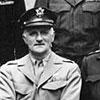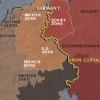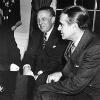 The Second World War changed the global economic landscape dramatically. Even before the United States formally entered the war following the December 1941 attack on Pearl Harbor, American industry had been furnishing supplies to help Great Britain and the Soviet Union continue their war against Hitler’s Germany. In the case of Great Britain, that aid took the form of the Lend-Lease Act, by which the United States provided war supplies (outdated destroyers, for example) to the besieged British government. In the case of the Soviet Union, American factories furnished trucks and critical cold-weather gear (particularly fur-lined boots and gloves) that helped the Soviet Red Army continue the war against the German Army on the Eastern Front during the brutal winter of 1940-1941. With the attack on Pearl Harbor, America’s role in the conflict changed dramatically: after two years of neutrality, the United States formally entered the Second World War on the side of the Allies. Mobilizing the American public for the war effort necessitated dramatic expansions of government power to procure the supplies, troops, money, and labor necessary to wage the war.
The Second World War changed the global economic landscape dramatically. Even before the United States formally entered the war following the December 1941 attack on Pearl Harbor, American industry had been furnishing supplies to help Great Britain and the Soviet Union continue their war against Hitler’s Germany. In the case of Great Britain, that aid took the form of the Lend-Lease Act, by which the United States provided war supplies (outdated destroyers, for example) to the besieged British government. In the case of the Soviet Union, American factories furnished trucks and critical cold-weather gear (particularly fur-lined boots and gloves) that helped the Soviet Red Army continue the war against the German Army on the Eastern Front during the brutal winter of 1940-1941. With the attack on Pearl Harbor, America’s role in the conflict changed dramatically: after two years of neutrality, the United States formally entered the Second World War on the side of the Allies. Mobilizing the American public for the war effort necessitated dramatic expansions of government power to procure the supplies, troops, money, and labor necessary to wage the war.
Source:
Roosevelt, Franklin D., “Looking up one of the assembly lines at Ford’s big Willow Run plant, where B-24E (Liberator) bombers are being made in great numbers., ca. 02/1943,” Series: Franklin D. Roosevelt Library Public Domain Photographs, compiled 1882 – 1962, ARC Identifier 196389 (accessed February 3, 2011).












